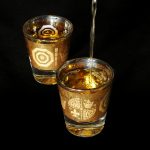When you think of beer, a non-alcoholic beverage is probably not the first thing that will come to mind. While most beer lovers will choose the regular, alcoholic variety, there are a number of people who choose non-alcoholic beer instead. Whether as an overall preference or for certain occasions, non-alcoholic beer will undoubtedly continue to prove popular for many years to come.
Non-alcoholic beer was first brewed back in 1919 in the U.S. This is largely due to prohibition when alcoholic beverages could be no stronger than 0.5 percent alcohol. Even after prohibition was done away with, non-alcoholic beer remained and today it’s a popular beverage alternative.
So, how is this drink made? Well, it starts out much like any other type of beer. The process is almost identical with just a few significant differences. The mash is made, the wort is boiled, hops are added, and the brew is fermented. The alcohol then needs to be removed.
Removing the alcohol is done most often through heating. Remember, alcohol has a lower boiling point than water and, when the fermented beer is heated up, the alcohol leaves the beer. That said, the heating process does change the flavour of the beer because you are essentially cooking it. This change in the flavour is the reason why many choose vacuum distillation instead. The vacuum helps lower the boiling point of the alcohol even further which means that it won’t need to be heated as much. While the alcohol is removed, the mixture is not heated to the extent that the flavour is significantly altered.
Another option is to allow the beer to pass through a filter with tiny pores so that only the water and alcohol make their way through. The alcohol is then distilled out of the mixture through regular distillation. The syrup-like mixture, that remains after the filtering process, is added to the product of the distillation. This means that only the water and alcohol are heated without heating the rest of the ingredients. Once the alcohol has been removed, you have beer but it’s notably flat. Beers usually carbonate themselves during the fermentation process. Non-alcoholic varieties do not have this ability which is why CO2 is added during the bottling process.


Be the first to post a comment.